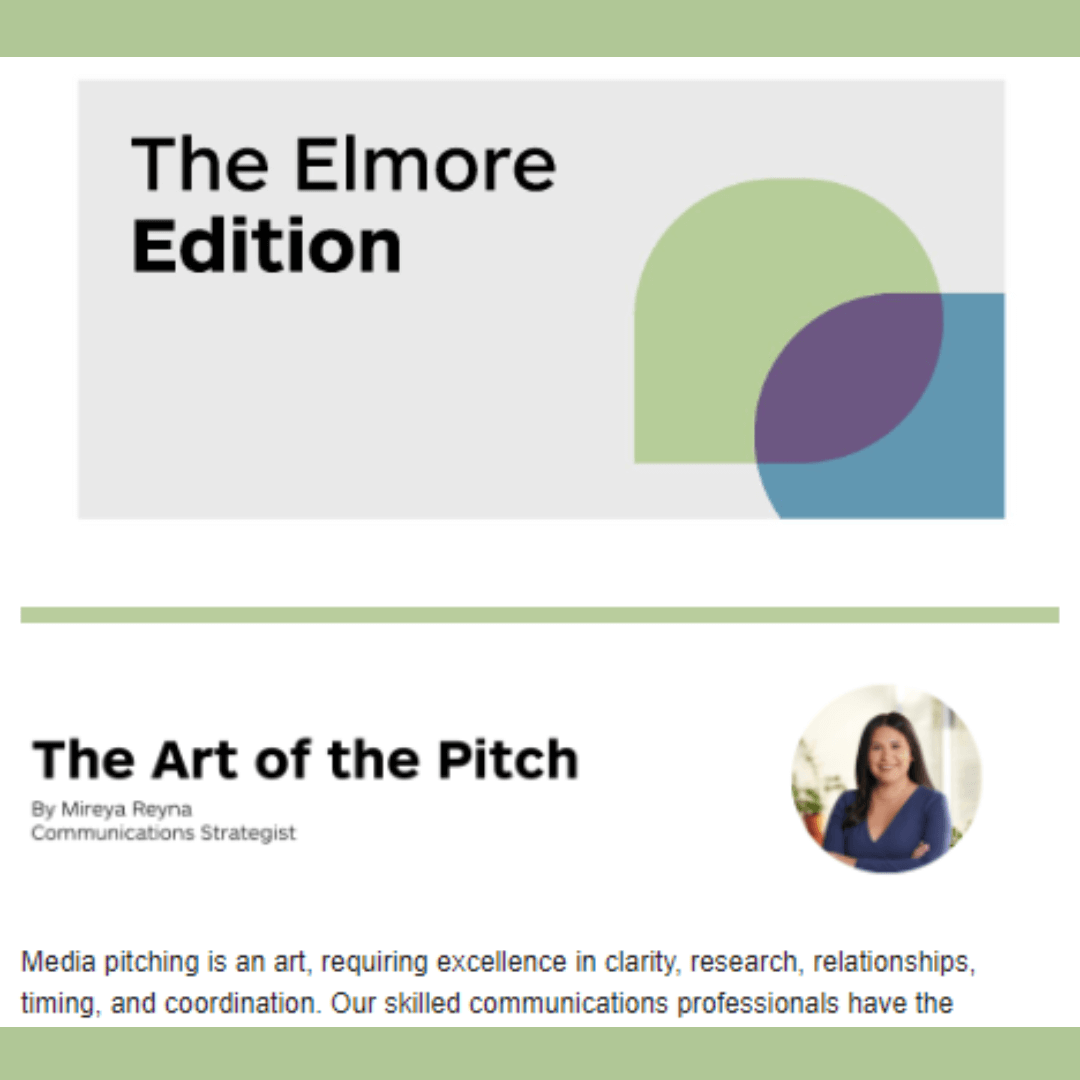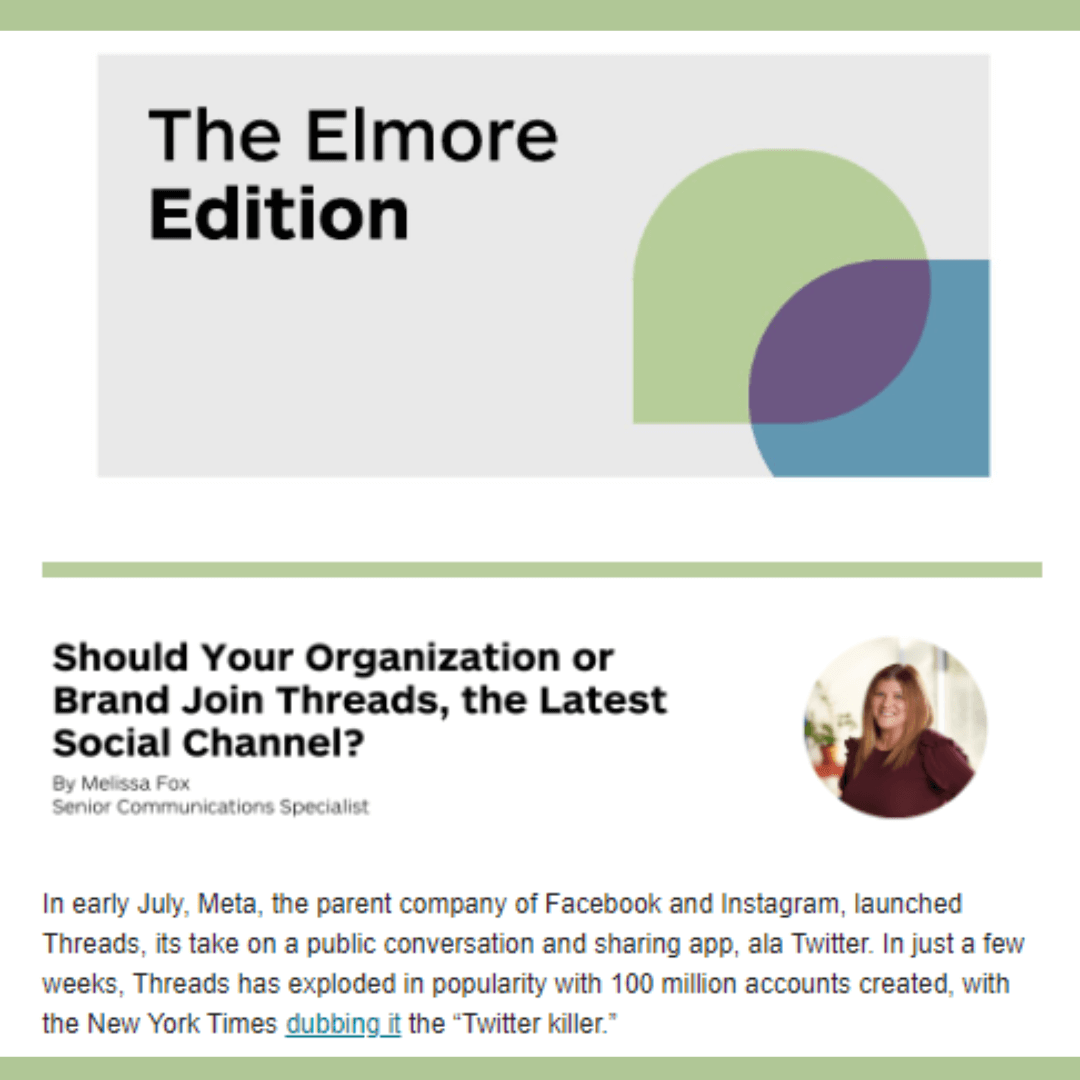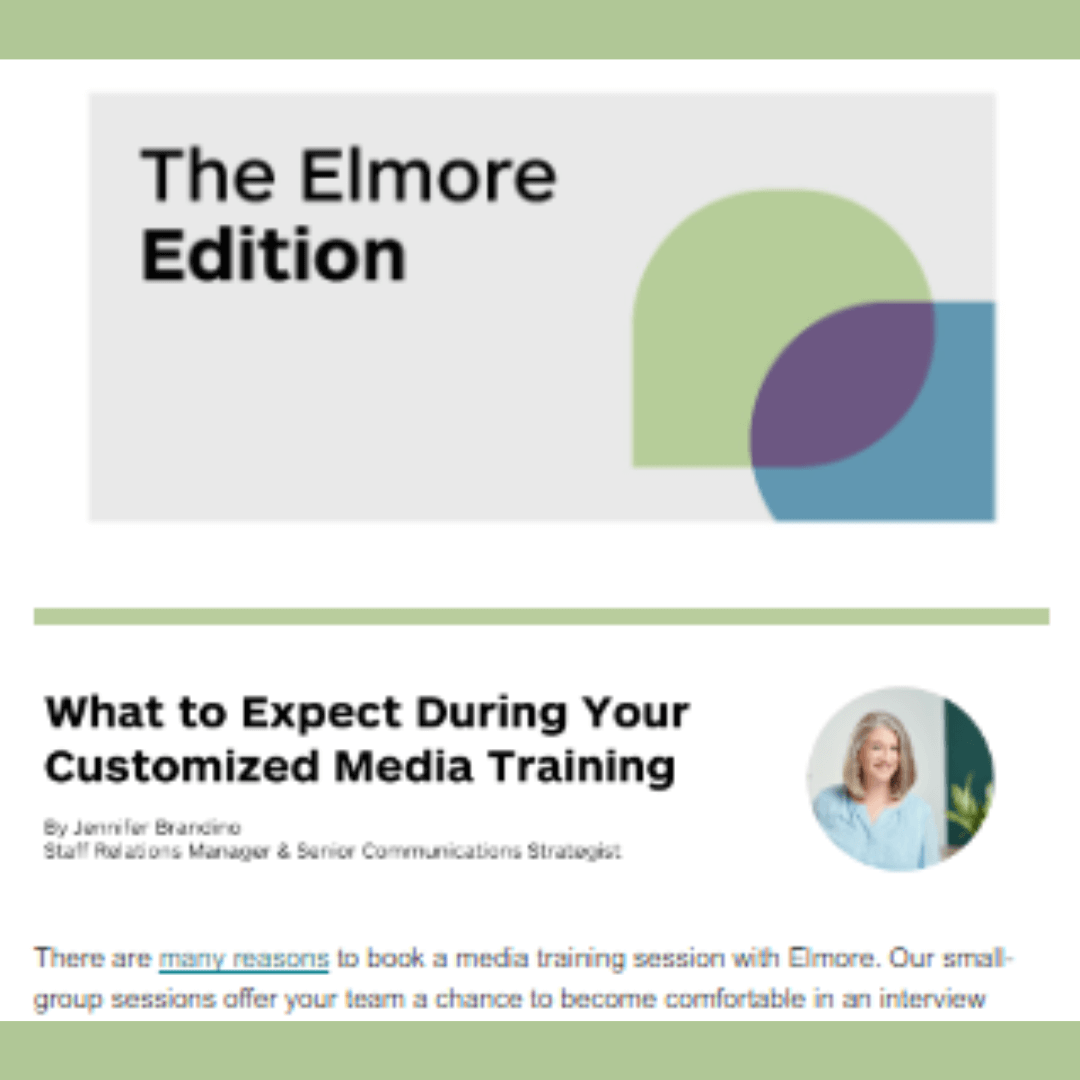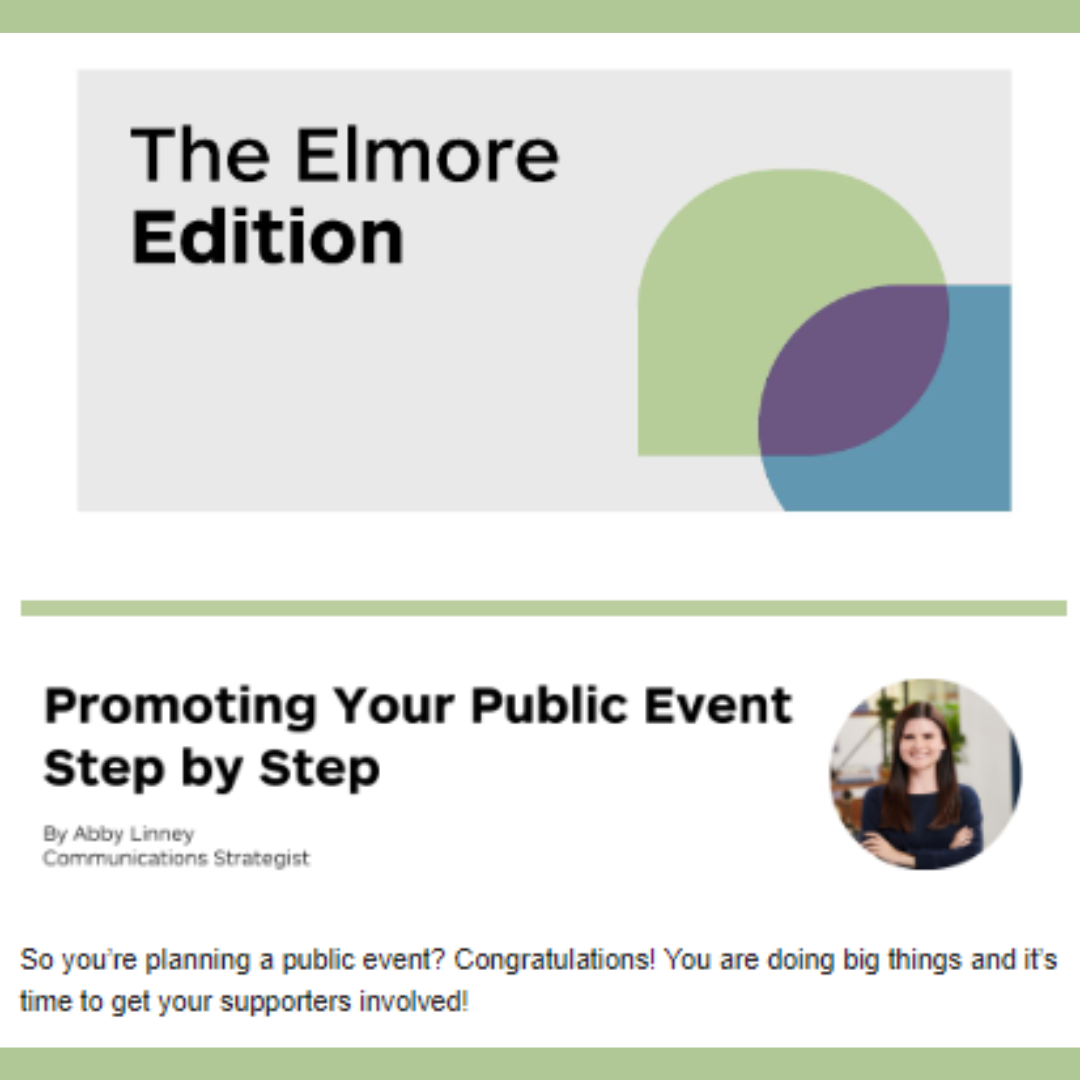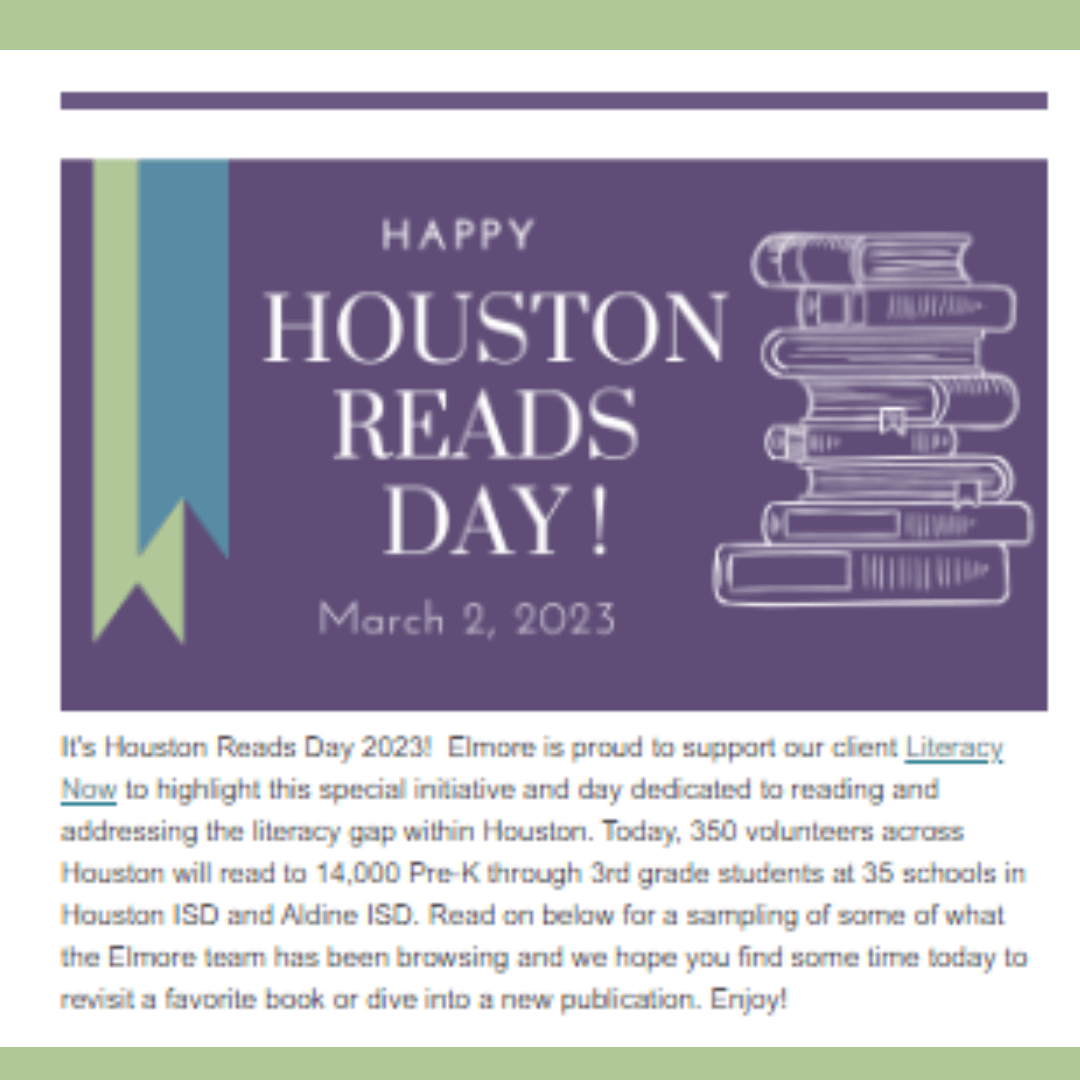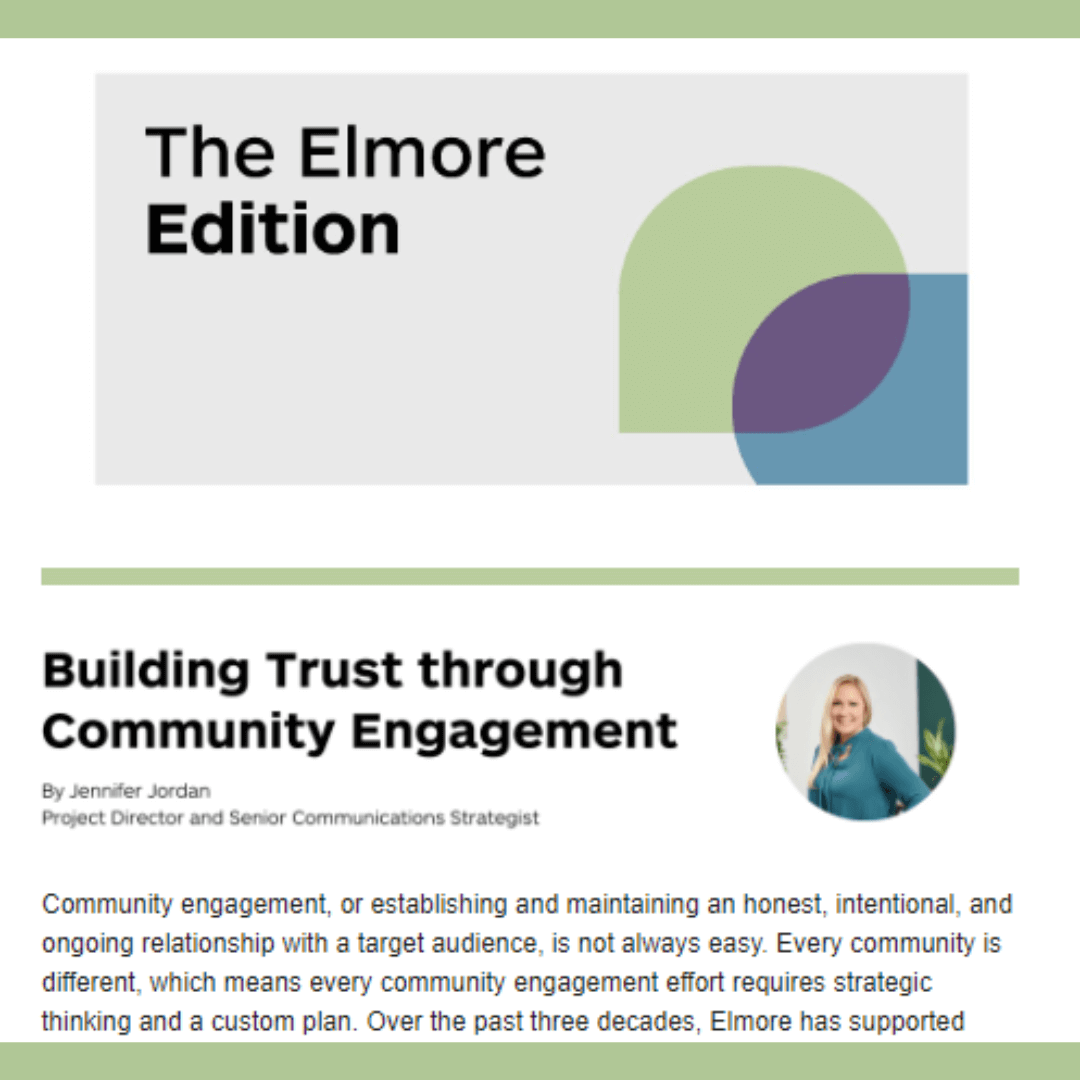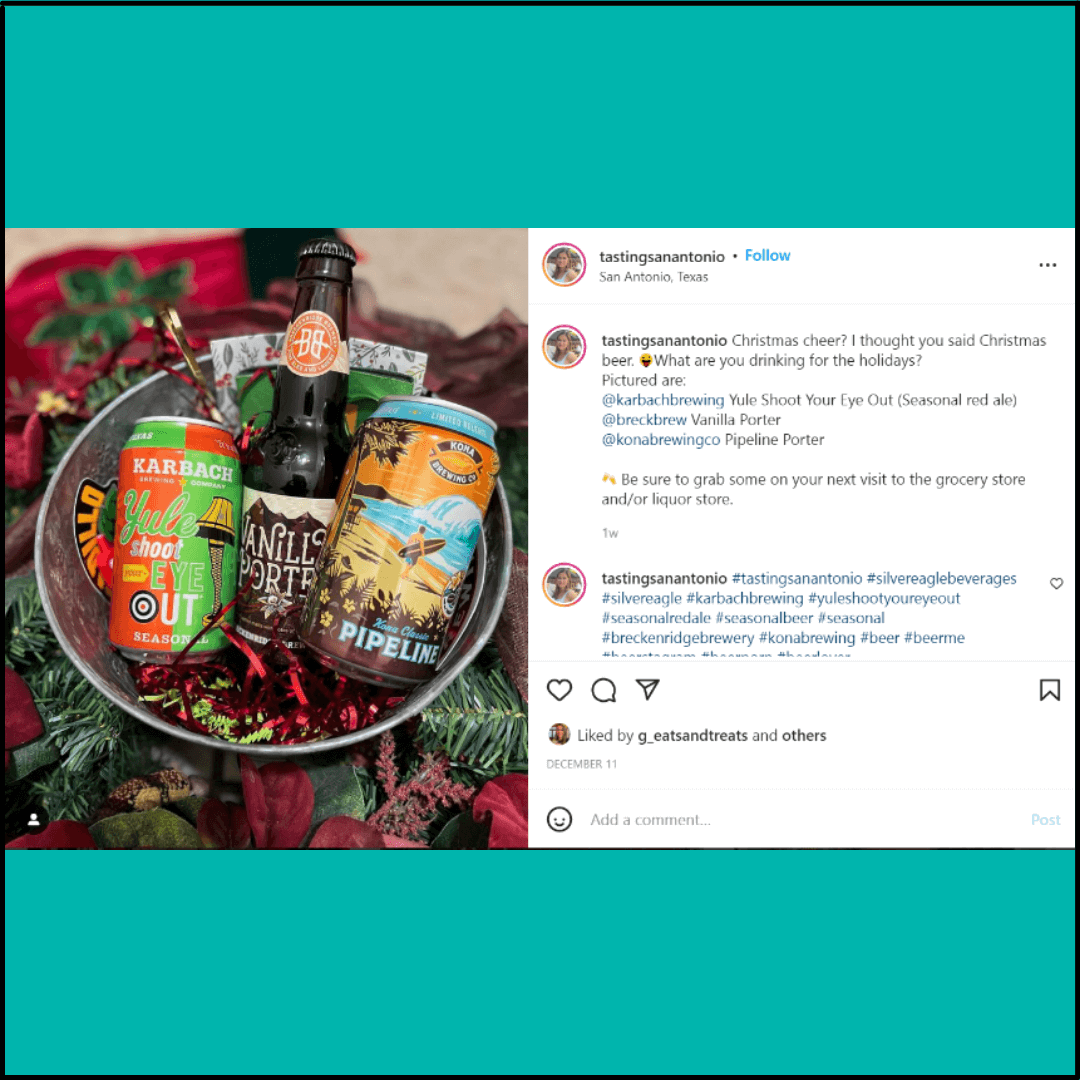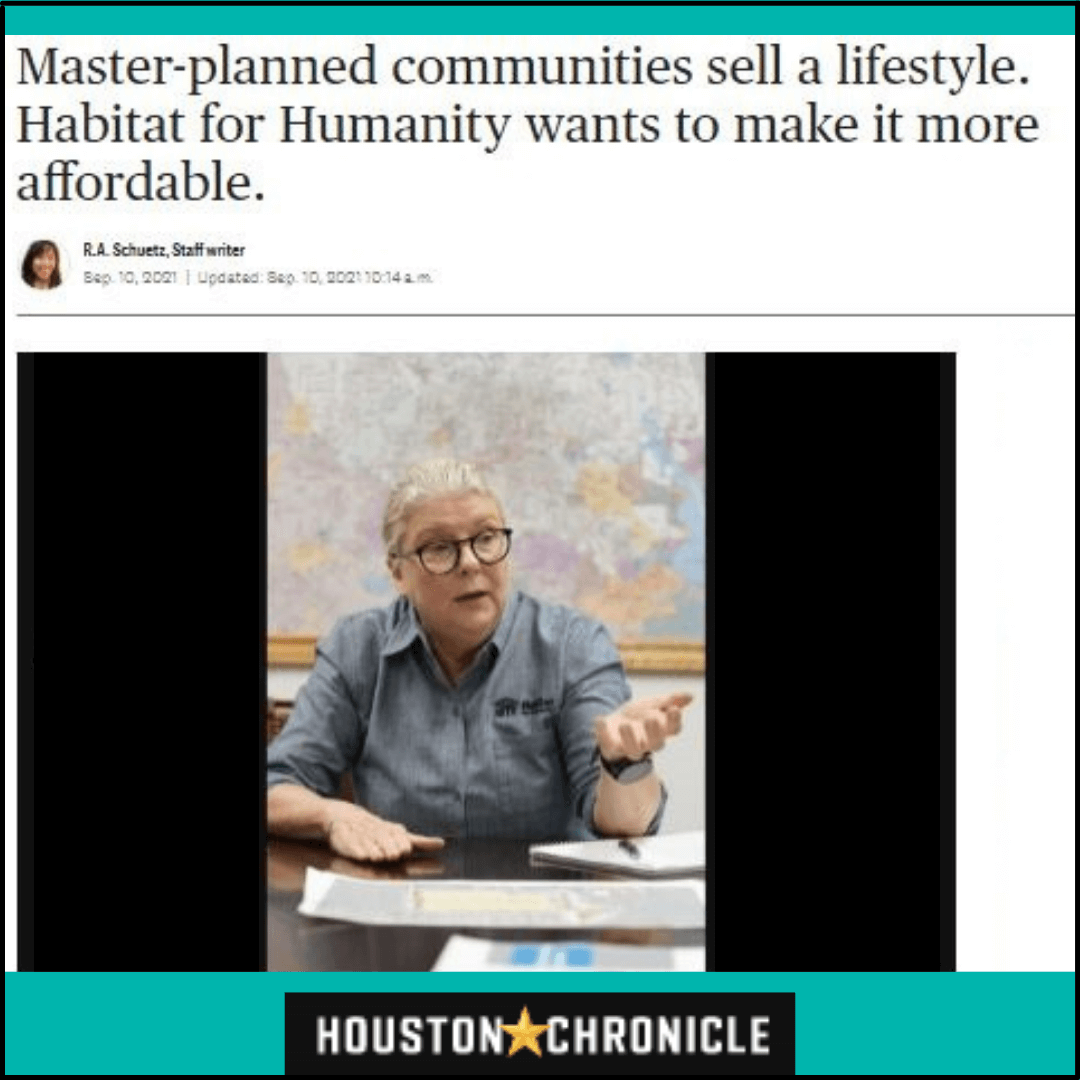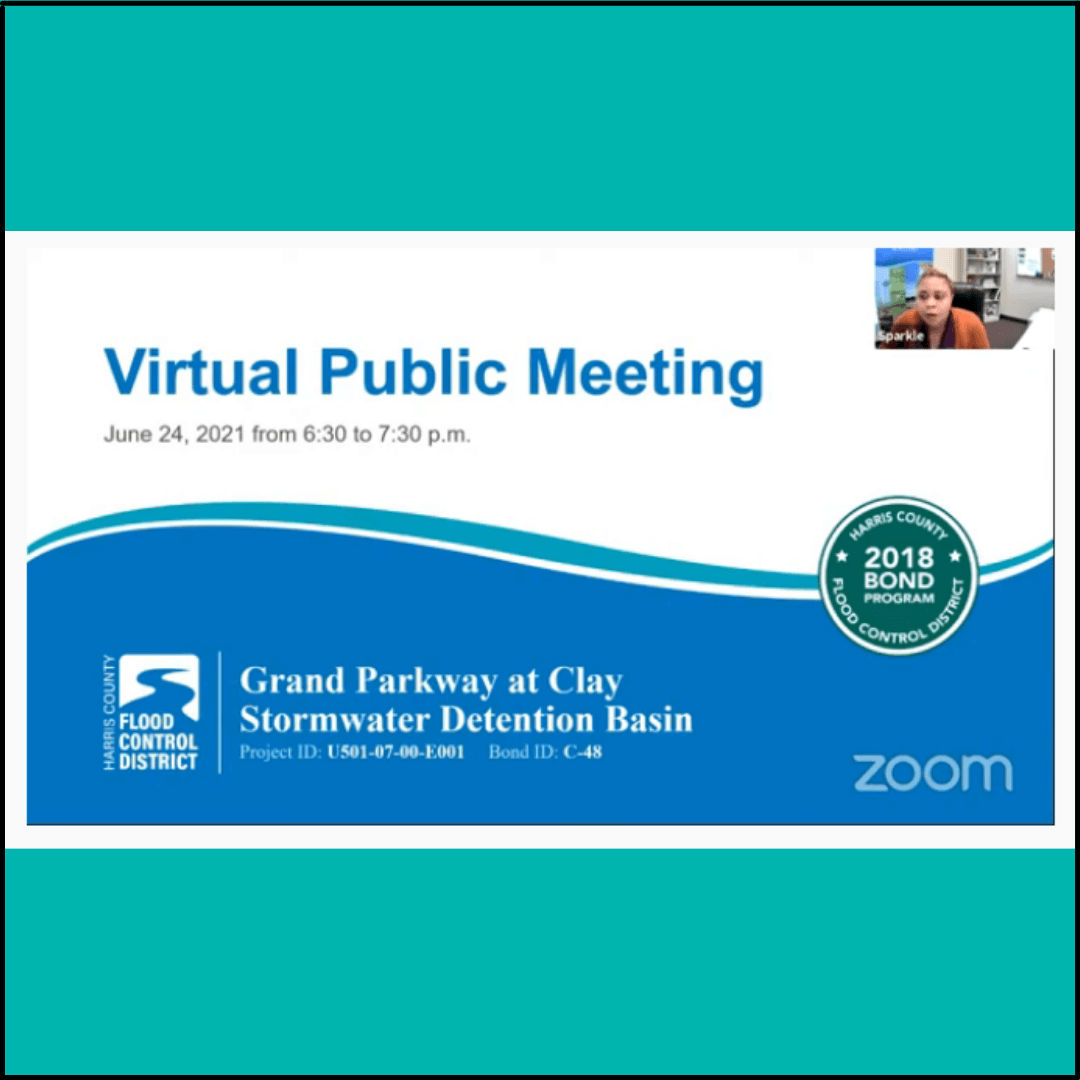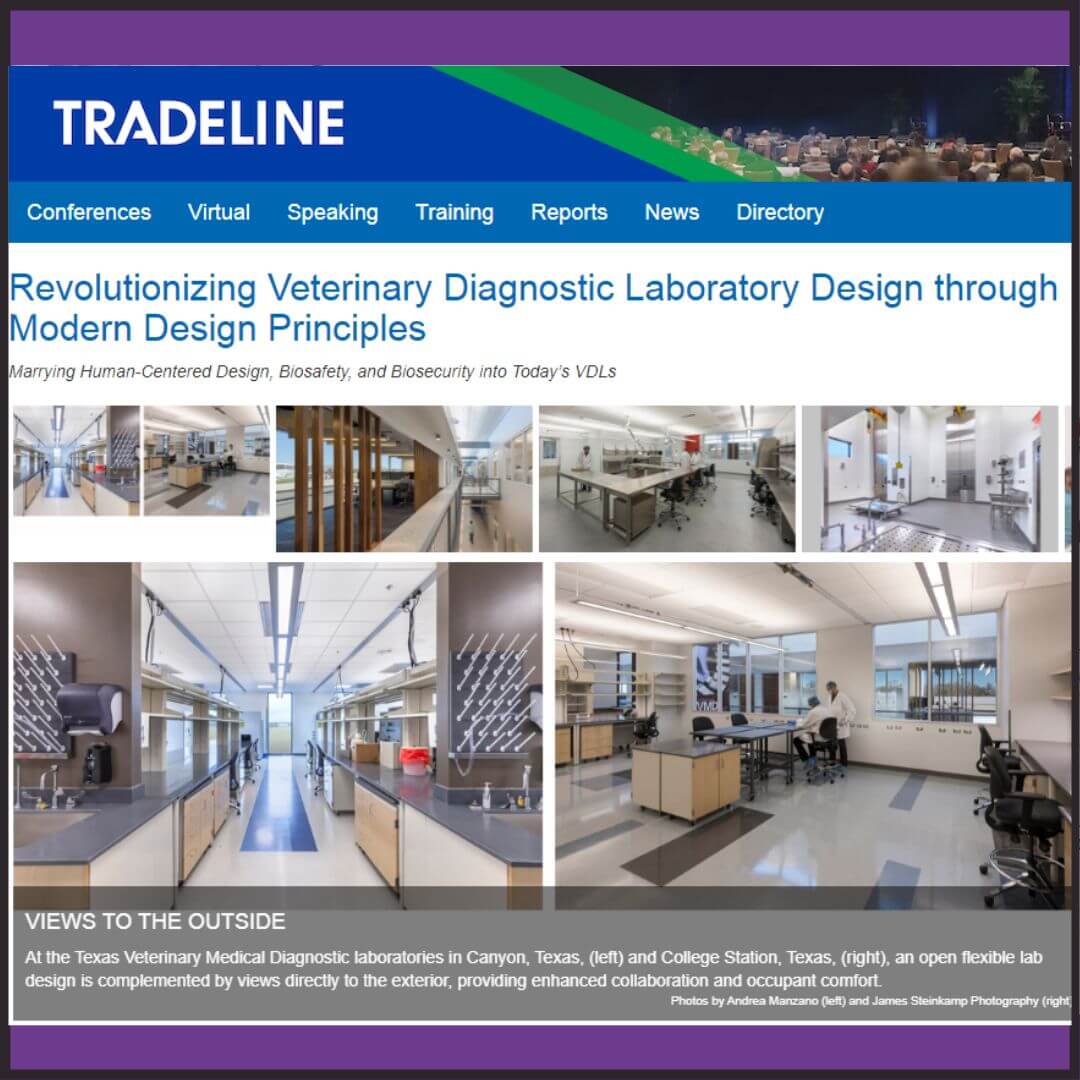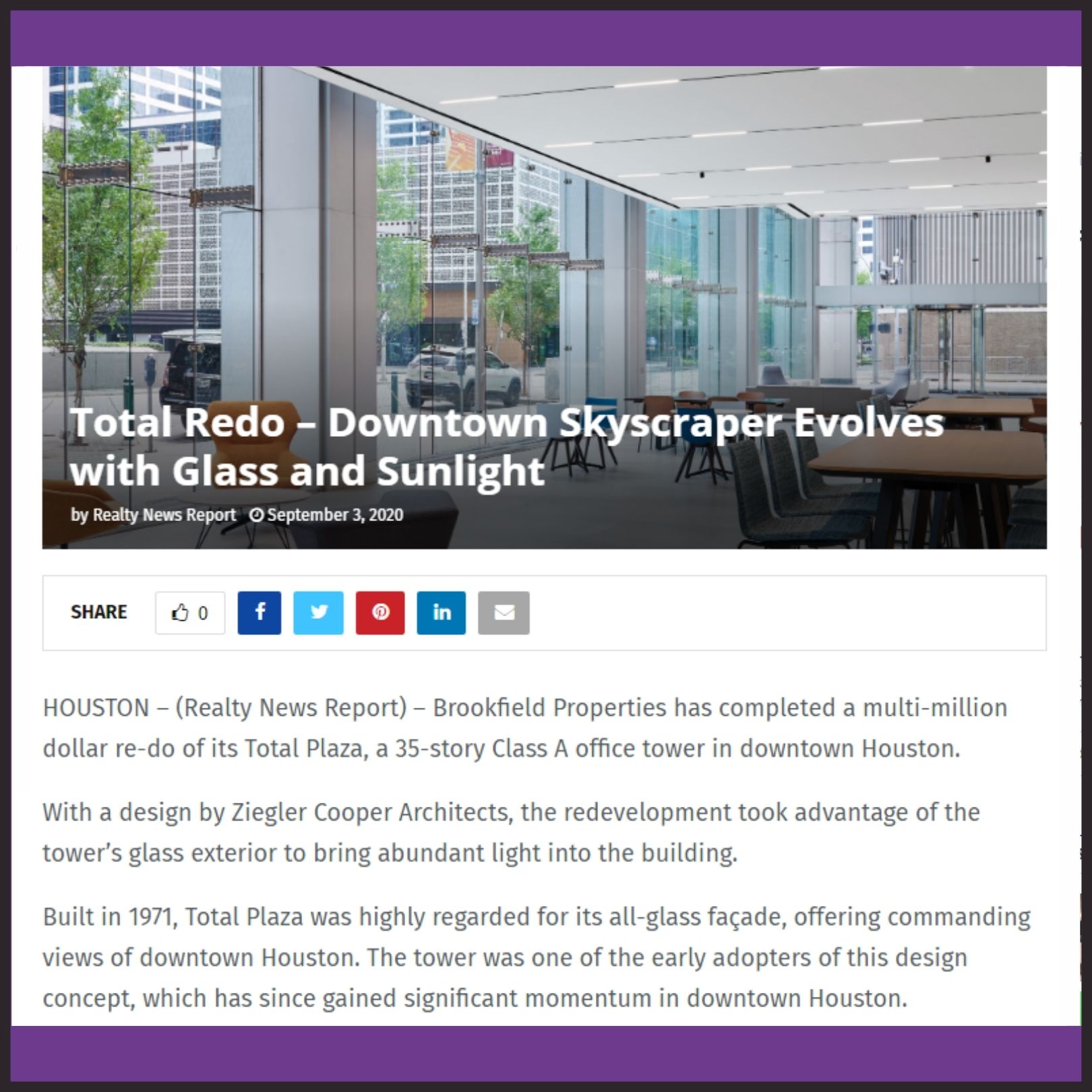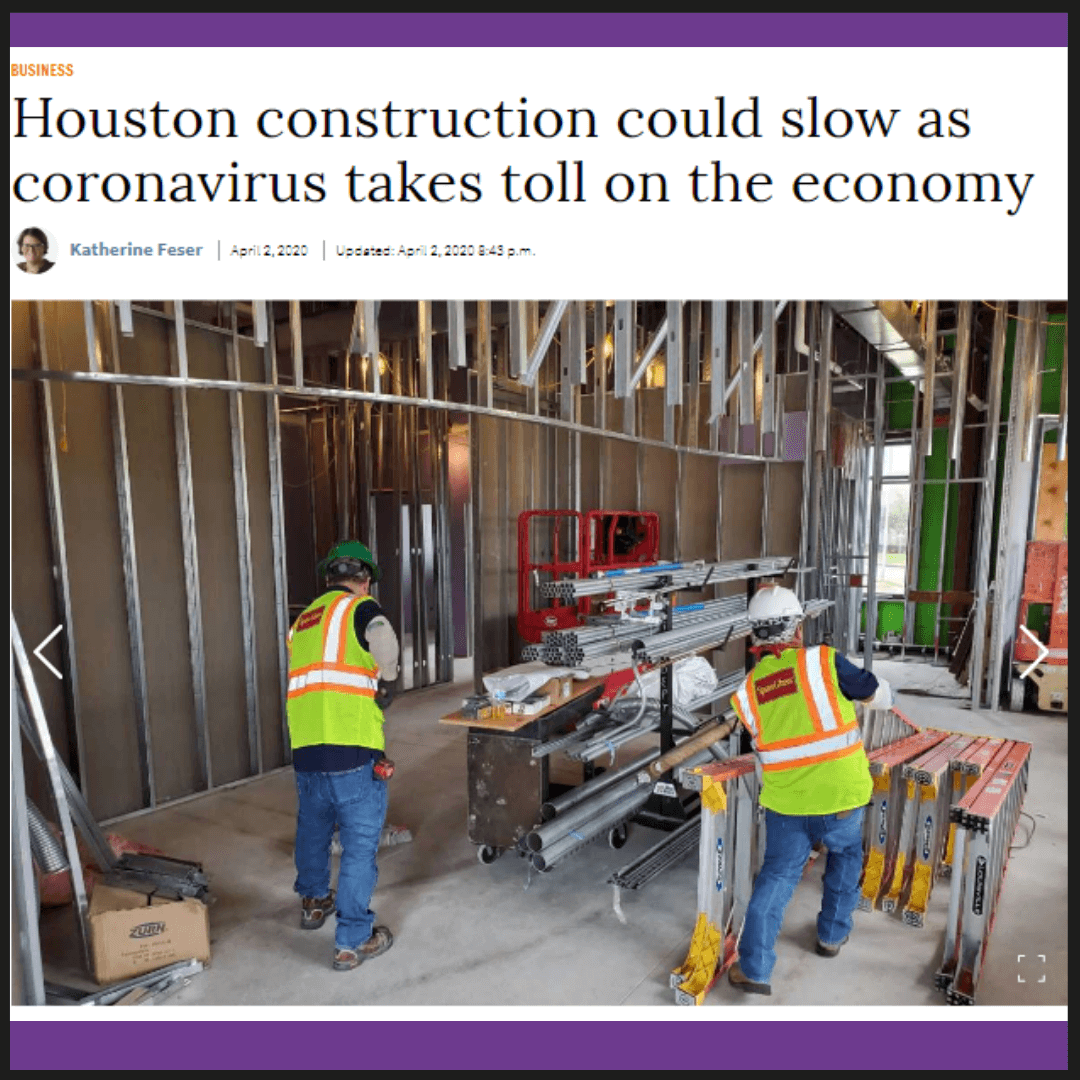I am writing with gratitude for the achievements and happy memories of 2023 and with anticipation for the year upon us. Last year, the Elmore team connected our clients to their audiences with clarity – successfully and purposefully amplifying their news, stories, and initiatives to earn impactful results. I encourage you to read some of those highlights here.
As we embark on a new year, my goal for 2024 is to provide increased clarity and meaningful context for your audiences.
The last several years have made audiences more discerning; the public want to know how – and why – things are the way they are and the potential impact or benefits to their lives. In other words, audiences now seek significant context in addition to facts.
We have found this applicable across the board, no matter the organization’s type, structure, size, or purpose. For example, when we are promoting the work of green space and parks organizations, the messaging is not simply about adding a particular number or miles of trails; it’s about improving park access and park quality for all.
In the commercial real estate realm, the messaging isn’t simply about bricks and mortar but about sustainability and the human experience in a space.
For educators and family services non-profits, the context supporting a decision is often tied to solving problems directly related to students still recovering from the pandemic or other significant life change.
And for arts organizations, we aren’t simply promoting programming, but how and why the art presented is culturally relevant and important in today’s charged social and political climates.
Context allows your public to understand your vision and to more deeply invest in your mission. In 2024, Elmore will lead with the context to build trust and gain buy-in from your audiences and to impart nuance in your messaging.
I understand 2024 will bring unique challenges and opportunities for all of our companies and organizations. New city leadership, a presidential election, and the constant polarization of values and opinions makes communicating with context more important than ever.
To our clients, we appreciate your continued trust in Elmore, and if we aren’t partnering with you yet, we hope you will let us help you articulate your vision and message to gain the trust and support of your audiences.
Yours sincerely,
Susan Elmore
